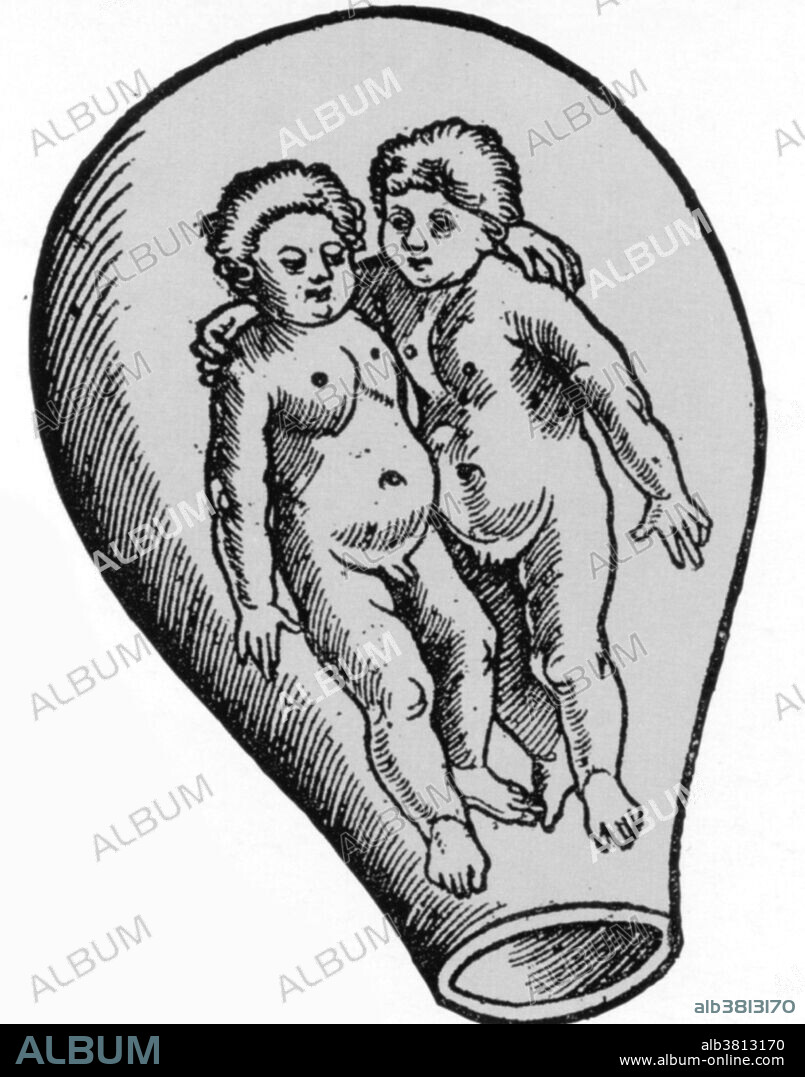alb3813170
Preformationism, 18th Century

|
Zu einem anderen Lightbox hinzufügen |
|
Zu einem anderen Lightbox hinzufügen |



Haben Sie bereits ein Konto? Anmelden
Sie haben kein Konto? Registrieren
Dieses Bild kaufen

Titel:
Preformationism, 18th Century
Untertitel:
Siehe automatische Übersetzung
One of the most important issues in the premodern biology of the 18th century was the struggle between preformationist and epigenetic theories of development. The preformationist s believed that living things develop after conception from miniature versions of the adult, fully formed organisms that simply enlarge in size from their tiny origin in germ (egg) or sperm. They assumed that the germs of all living beings were preformed and had been since the Creation. The Deistic theory of preformism assumed that God had determined the organizational forms of all organisms at the creation of the world. After that, the mechanical laws of matter did the rest. Thus preformism could be a mechanistic theory in which the divine watchmaker conceives a plan of the object which guides its production. According to Descartes, "if one knew in detail all the parts of the seed of a particular species of animal, for instance, Man, one could deduce from that alone for reasons entirely mathematical and certain, the whole figure and conformation of each of its parts." For preformationists, the egg, or rather the germ, supposedly housed a homunculus, a tiny version of the adult, each part of which expanded into the corresponding part of the adult.
Bildnachweis:
Album / Science Source / New York Public Library
Freigaben (Releases):
Model: Nein - Eigentum: Nein
Rechtefragen?
Rechtefragen?
Bildgröße:
2649 x 3371 px | 25.5 MB
Druckgröße:
22.4 x 28.5 cm | 8.8 x 11.2 in (300 dpi)
Schlüsselwörter:
18. JAHRHUNDERT • 18. JH. • BIOLOGIE • BRUDER UND SCHWESTER • EI • EMPFAENGNIS • EMPFÄNGNIS • GESCHWISTER • ILLUSTRATION • ILLUSTRATIONS • KURIOS • MINIATUR • SCHWANGERSCHAFT • UNHEIMLICH
 Pinterest
Pinterest Twitter
Twitter Facebook
Facebook Link kopieren
Link kopieren Email
Email
